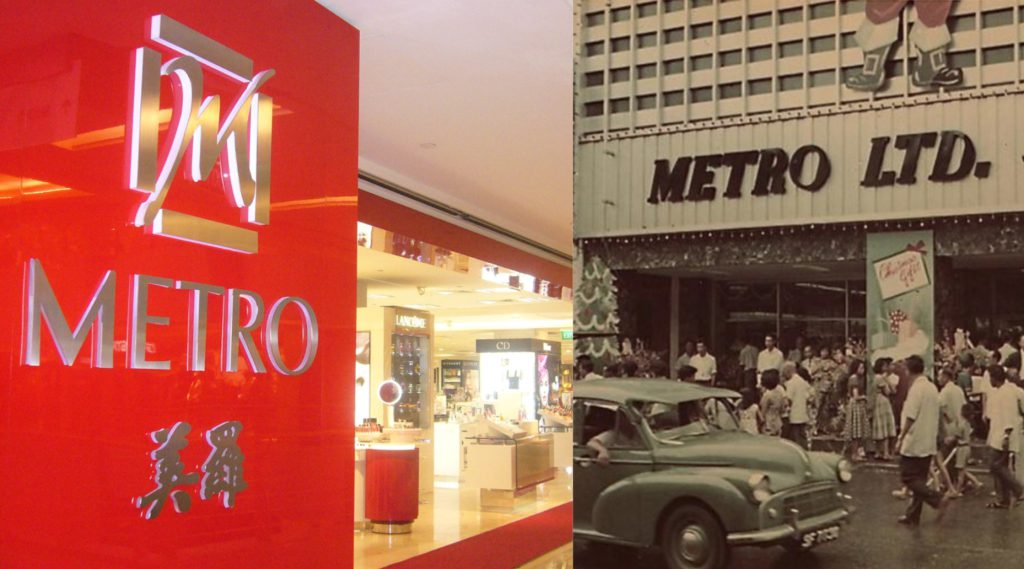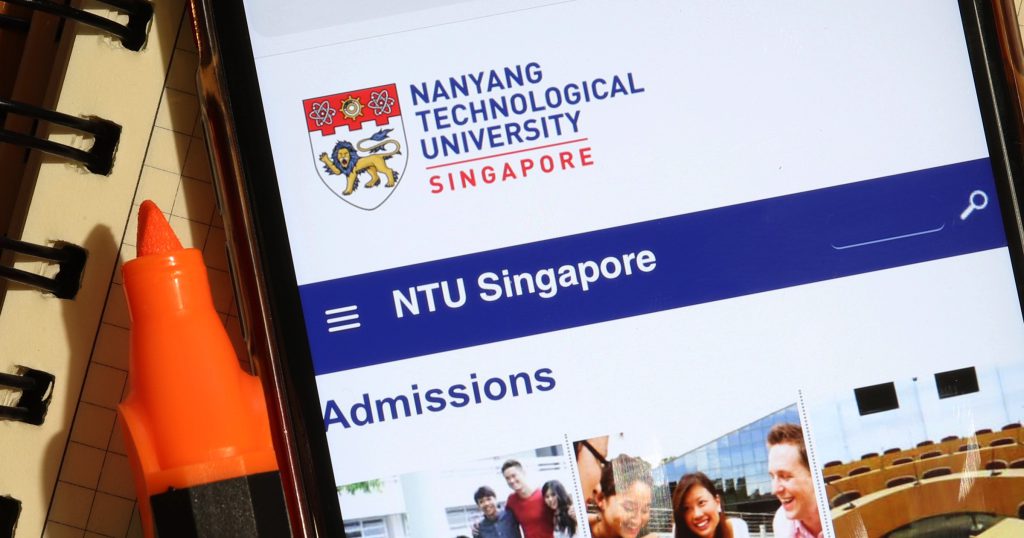This sixty-five-year-old business has witnessed most of Singapore’s growth and journeyed with Singaporeans young and old.
I can’t remember my first item bought from Metro but I am pretty sure that I have at least bought one item there before. Once upon a time, department stores were found in almost every shopping mall, and it was the go-to place for international brands. There you can get an assortment of overseas products, including shoes and make-up.
In fact, I may have even bought my first pair of work shoes and work attire from a department store.
But the advent of the internet may be the biggest contributor to causing department stores to keel over (like Robinsons downsizing and closing its physical stores). For those who are older, they should also know of the existence of other department stores that have shuttered – Daimaru, Yaohan, Sogo, and Emporium.

Metro has not been spared in this exodus. Some may recall going to Metro’s flagship store at Centrepoint in 2019 to shop and queue for the heavily discounted items when it announced that it was shutting that outlet after five years of operations.
Looking at a retail landscape like this, we have to acknowledge the resilience this 65-year-old brand has and what it has endured. In fact, Metro has been slowly diversifying its portfolio since its early years, making it harder to stumble if a recession (like the one that occurred during the pandemic) hits.
Metro celebrated its anniversary on March 8. We take a look at the beginnings of this household brand and find out how it got to where it is today as it continues to be unbeaten even after many hard knocks.
The beginning of Metro
It began as a textile shop in 1957, situated in a two-storey shophouse at 72 High Street.
The shop was founded by Ong Tjoe Kim who was originally from Fujian, China, and he had migrated to Indonesia when he was a teenager. Shortly after founding Metro, Ong migrated from Indonesia to Singapore.
Ong loved movies made by movie studio Metro-Goldwyn-Mayer, and named his first store Metro.

The 2,690 sqft shop was known for its wide range of fabrics for making traditional costumes such as sarong kebaya and cheongsam.
Metro’s clientele served mostly local and wealthy Indonesian housewives. Meanwhile, other department stores such as Robinsons catered to British expatriates and some locals.
In 1964, Ong’s eldest son Jopie joined the company and was tasked to grow the retail division. Under his guidance, Transmarco, a wholesale brand that dealt in luxury brands like Cartier and Piaget watches was formed.

Jopie also helped to guide Metro Holdings to a mainboard listing on the Singapore Stock Exchange in 1973.
The rise of Metro
The department chain had some good times as a retailer from the 1950s to the 2000s. At its peak, it had 11 stores in Orchard Road and in the heartland. It brought international concepts to Singapore, and also co-founded The Hour Glass.
It was among the first Singapore department stores to expand to the suburbs with Metro Marine Parade in 1976.
At one time, Metro had five department stores on just Orchard Road alone.

Metro owned a prime leasehold plot of land on Orchard Road through Orchard Square Development Corp, and with Ngee Ann Kongsi, they jointly developed it into Ngee Ann City retail mall and office complex. Metro had a 27 per cent stake, which it securitised in 2003.
It was also one of the first Singapore companies to venture into the China market. The group’s construction unit Metrobilt, which was set up in 1976, entered a joint venture to develop office property in Guangzhou, China.

The development was completed in 1993 and is 100 per cent owned by Metro today. Other investments in China include malls and office buildings in Chengdu and Shanghai.
It also ventured into Indonesia where it once owned more than 10 outlets.
Shifting to property development
Over the years, Metro has transformed from a humble retailer to a diversified property player.
The company pivoted to property investment after observing that the retail industry was becoming highly competitive. Competitors like Robinsons, which was older than Metro – established in 1858 – lost its physical outlets to become a full online store.
In Singapore, Metro had a 40 per cent share in the development of The Crest at Prince Charles Crescent. The remaining 60 per cent was held by Wing Tai Holdings. The 99-year leasehold project was completed in 2017 and sold out all 469 units.

Metro has a stake in 351 On Braddell too, through its subscription of 26 per cent of the units in Boustead Industrial Fund as well as seven per cent of notes due in 2031. Metro paid S$76.6 million for its stake at the end of 2020.
In Indonesia, Metro has a 90 per cent stake in two residential developments in Jakarta. The two projects are over 70 per cent sold across the board.
Metro has been in the United Kingdom (UK) since 2014 and has stakes in two projects in Manchester, one in Sheffield, and one in Salford. The property types are a range, from residential, to mixed-use, to commercial.

All in, Metro has accumulated investments in malls, commercial buildings, logistic and industrial properties, residential properties, mixed-use developments, and student accommodations.
Today, the company’s presence can be found in five countries – Singapore, China, Indonesia, Australia, and the UK. The company takes a minority stake in most of its investments.
Closure of department stores
Metro closed its biggest store, across six levels at Centrepoint, in September 2019.
The company said that it did not renew the five-year lease with the landlord as it felt that it already had a presence at Paragon on Orchard Road.

Today, Metro only has two department stores in Singapore. One is at Paragon on Orchard Road and the other is in suburban mall Causeway Point in Woodlands, which has been there since 1998.
In 2019, the group also exited its Indonesia department store ownership, and sold its 50 per cent stake in PT Metropolitan Retail Mart (portfolio of 11 Metro stores) to its joint-venture partner CT Corp.
A check at its latest financial results reveals a shift in earnings contributions. Its retail operations have been reduced even prior to Covid-19 while the property segment has been slowly increasing.
Post-pandemic times: The return of retail sales
Last year, when people were starting to get used to the new normal, more came out to shop for things during the year-end festive season.
Metro said during the Black Friday sales in November that there were encouraging sales from its physical stores and online.
The retailer observed that shoppers appeared more comfortable going into stores compared to a year ago, but it added that in-store traffic had not returned to pre-pandemic levels.

The same was said during Singles’ Day which was on November 11, where many shopped at retail stores like Metro.
With Singapore reopening and more tourists arriving this year, retailers are expected to see an uptick in sales to boost their dried-up tills.
This is observed by an 8.7 per cent increase in Singapore retail sales in March, a reverse from February’s decline, government data showed. Sales of wearing apparel and footwear and cosmetics, toiletries and medical goods contributed to the increase, reflecting more consumers out shopping physically.
Department stores for that month posted a 17.2 per cent increase in retail sales from a year ago, indicating the improvements, the Singstat data showed.
An eye on property investments for the future
The property developer and retailer has its sights set on more investments and expansion plans overseas in the road ahead.
It is now growing its presence in Japan via its collaboration with Daiwa House, a logistics and industrial property player.
Through the tie-up, the partners are set to collaborate on investments in various types of properties, with an initial focus on logistic properties, commercial, housing, and other asset classes in Japan, Singapore, and the Asia Pacific region or beyond.
The soon-to-come ease of travel restrictions between Japan and the rest of the world will help to expedite plans on that front.
With travel slowly back on track, it will make it easier for the team at Metro to travel and check-in with its partners in the different countries.

Although the retail landscape has changed drastically over the past few decades, Metro’s journey has shown that it is possible to move with the times and still be operating successfully after generations pass.
The ability to stay nimble and to be willing to adapt to change constantly is what makes companies like Metro stay relevant even in today’s climate.
Featured Image Credit: Metro










